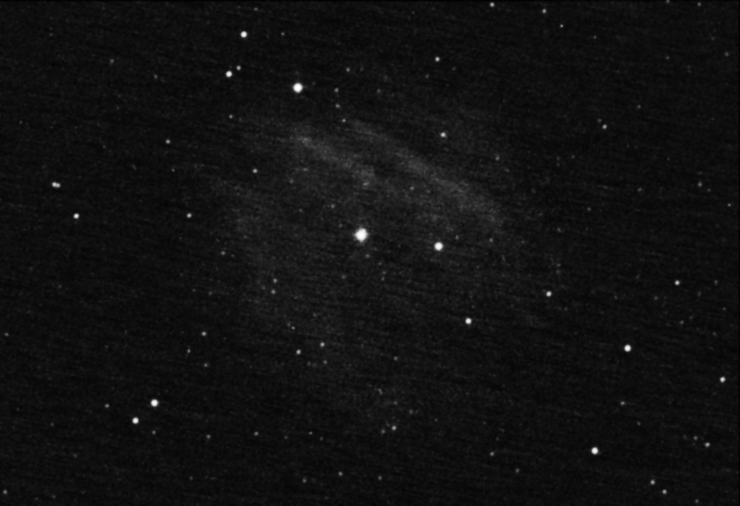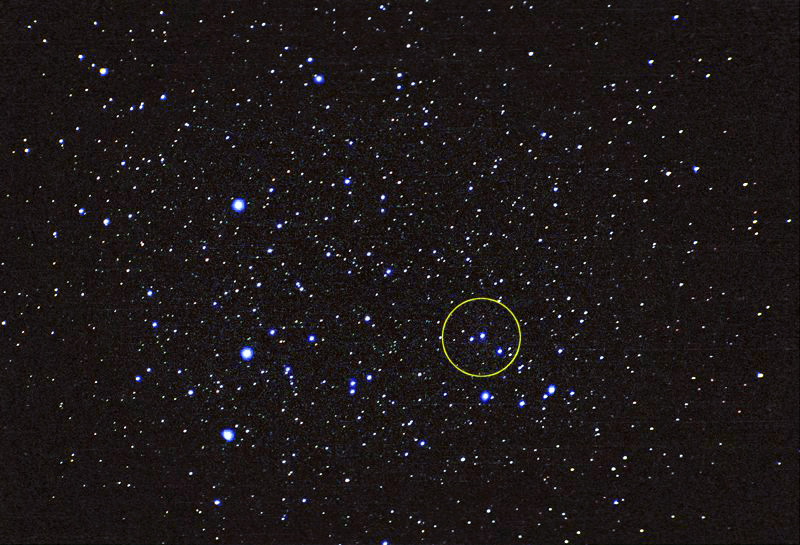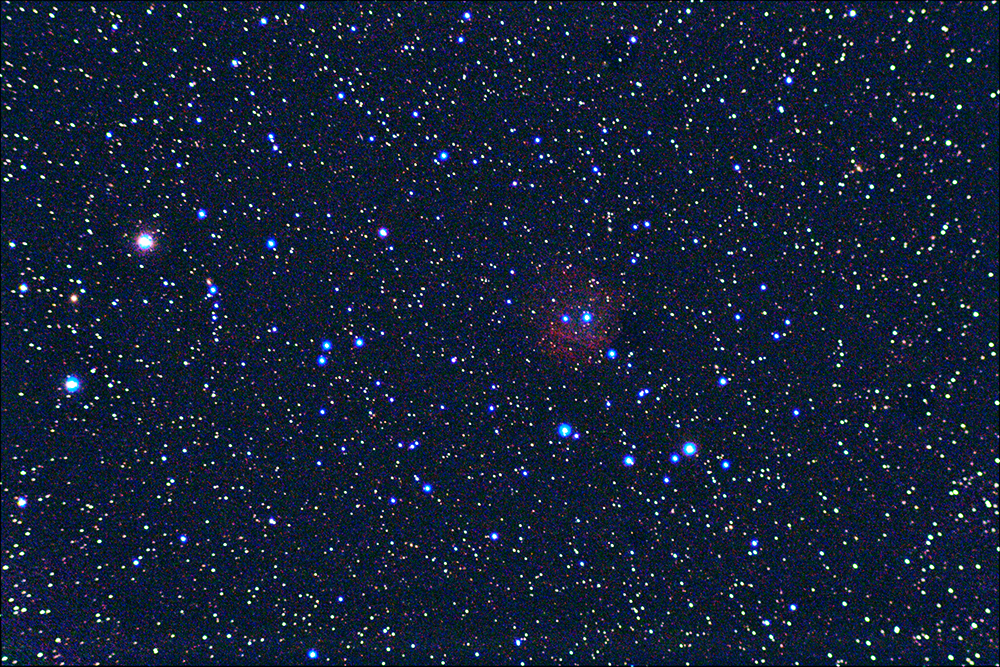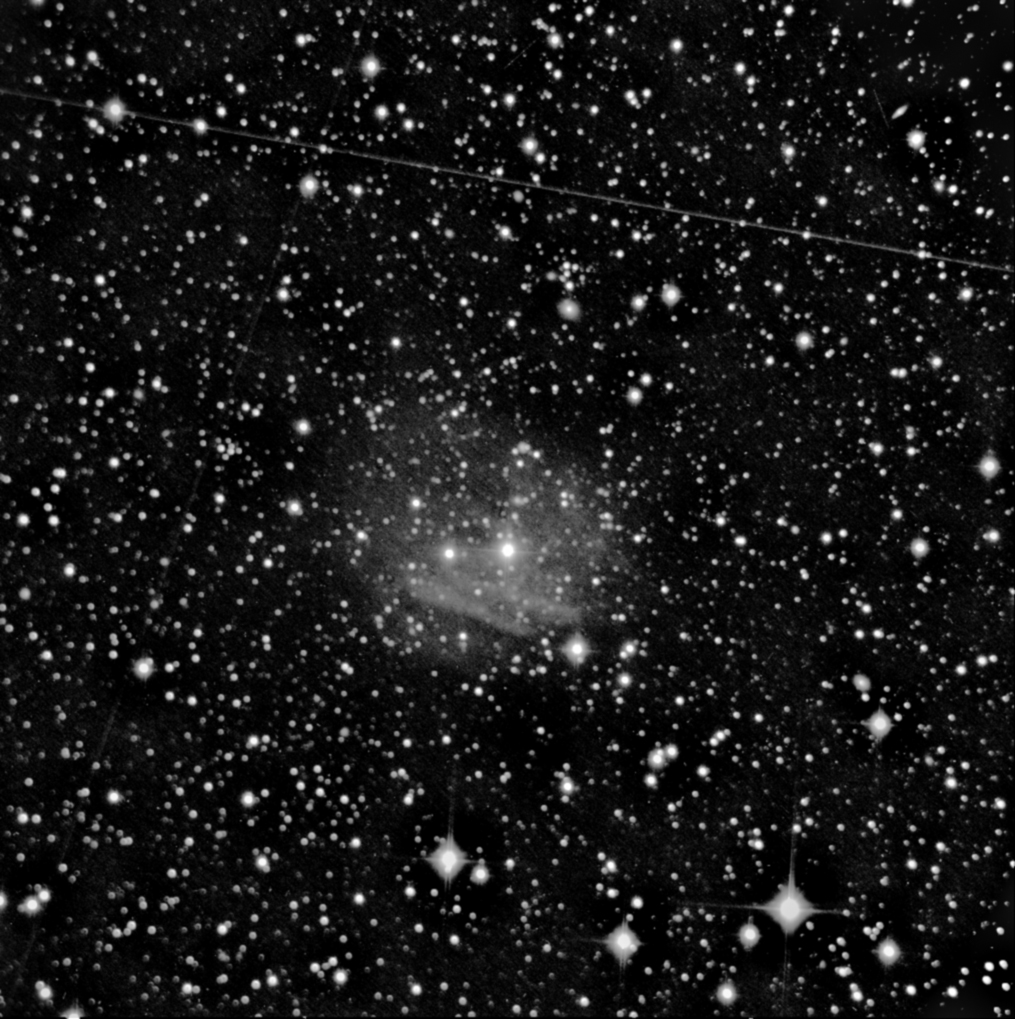
Combination of 20, 3 minute images using an H-alpha filter.
SBIG ST-8XE CCD. 300mm f/6 newtonian telescope at prime focus.

Abell 35 is typical of the Abell planetaries. Very large and VERY faint! Although the listed magnitude of Abell 35 is 12.8 (photographic), it is about 0.25 degrees across and very difficult to observe without a large telescope and dark skies. An OIII filter also helps. The only telescope I have managed to observe this planetary with was a 17.5" under very dark skies. Even then, it was extremely faint and only vague patches of nebulosity could be seen.
I first tried to image this planetary back in the mid 1980's using film and a 5" f/5 refractor.

At that time, using a magnifier and very careful scrutiny, I could just make out a vague, faint patch were the planetary was supposed to be. In the image above, the location of the nebula is indicated by the circle. Abell 35 surrounds the two stars near the centre of the circle. Only the most vague hint of the nebula is visible. Ever since then, I have wanted to obtain a good image of this very challenging object! It has also given me an interest in imaging other very faint Abell planetaries. So far I have been successful with a number of them, however since they are so faint, colour imaging will probably have to wait until I am back in Australia permanently and have more time.


The streaks of two satellites can be seen in the image along with a number of very faint galaxies.